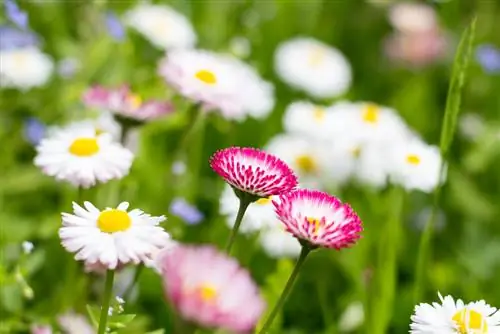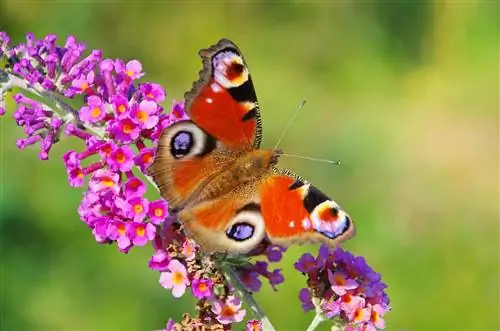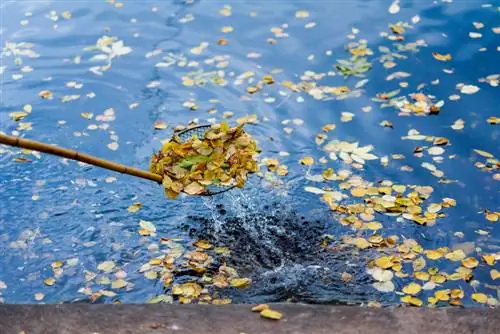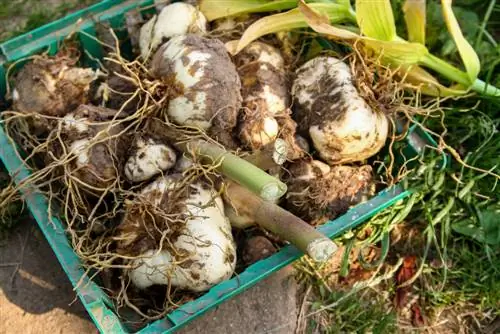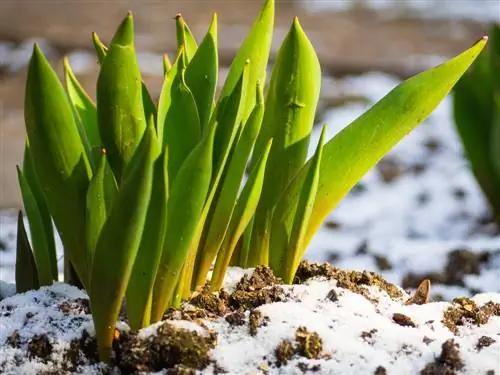- Author admin [email protected].
- Public 2023-12-16 16:46.
- Last modified 2025-01-23 11:21.
If Bellis are listed in the planting plan, home gardeners puzzle over the lifespan of the distinctive flowers. This guide explains clearly whether you can expect blooming daisies in beds and containers for several years.
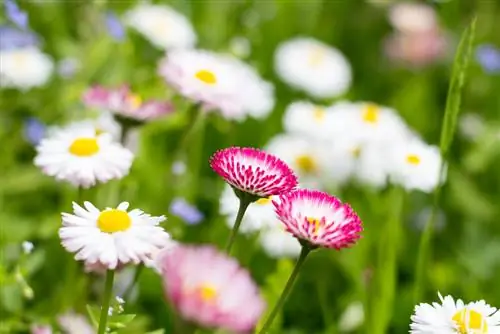
Are bellis perennial plants?
Bellis (daisies) are primarily biennial plants that develop green rosettes of leaves in the year they are sown and die after flowering. The flowers appear the following spring and self-seeding seeds ensure reproduction from year to year.
Two-year life cycle characterizes Bellis perennis
Among the 12 Bellis species from the Mediterranean region, Bellis perennis was the only specimen to make its way north in ancient times. In the course of evolution, the distinctive flowering plant developed an ingenious survival strategy for the bitterly cold winters in Central and Northern Europe. The result is growth as a two-year-old mini-perennial with such resounding success that daisies are now one of the most famous plants in Europe. The connections in brief:
- In the year of sowing: growth of a green, dense rosette of leaves
- The following spring: sprouting of leafless, upright stems, each with one flower head
- Annual flowering period from spring to the first frost
- Parallel to the flowering period: sowing seeds for reproduction
After the flowering period, a Bellis perennis dies. Since the mother plant previously provided numerous offspring through self-sowing, the delicate flower festival continues from year to year. The rosette of leaves from which the flower stalks emerge the year after sowing is really hardy down to -34 degrees Celsius.
Bellis flowers defy frost
Bellis flowers benefit from the robust winter hardiness of their green leaf rosettes. The white-yellow ray flowers develop early in the year when other perennials are still in their winter dormancy. Temperatures down to -8 degrees Celsius don't stop Thousands of Beauty from flirting with the first rays of sunshine. In rainy weather or bitter frost, the clever mini perennials quickly close their flower heads and wait for the next sunny day.
Hybrids need winter protection
The wild daisy in particular can rely on a stable winter hardiness of up to -34 degrees Celsius. Cultivated forms, such as the lushly filled daisy 'Roggli', have lost their frost tolerance. A thick layer of leaves in the bed protects against frostbite. We recommend a cover made of winter fleece (€23.00 on Amazon) or bubble wrap for the bucket and box.
Tip
During their long flowering period, daisies give us a very he althy treat. Resourceful housewives know how to use the flowers, leaves and buds as a delicious ingredient in salads, desserts and drinks. Prepared as a tea, it relieves painful stomach problems and annoying coughs.

